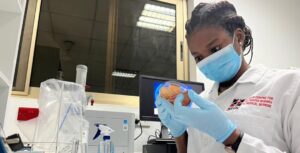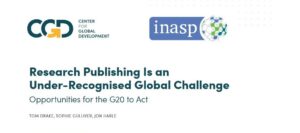
Alcohol use is one of the major causes of head injuries in Nepal
Head injuries can be fatal, particularly if the assailant intentionally targets the victim to cause maximum damage. A recent study published in the Birat Journal of Health Sciences in Nepal has found that over a third of all intentional head injuries – assaults intended to kill or incapacitate a person – were related to alcohol use.
The article, titled Intentional Head Injury: Survivor Victim’s Profile, Gender Differences and Role of Alcohol Use at Manipal Teaching Hospital, Pokhara, Nepal by Alok Atreya, T Kanchan and BG Karmacharya, is based on research carried out among victims of physical assaults admitted at the Neurosurgery Unit of Manipal Teaching Hospital, Pokhara, Nepal in 2015.
“We carried out the study because not many studies are being conducted in neurological cases in Nepal,” says Dr Alok Atreya, lead author of the article and Assistant Professor at the Department of Forensic Medicine, Nepal Medical College and Teaching Hospital, Nepal (previously Lecturer at Manipal Teaching Hospital). “We found that young males were the ones most affected by intentional head injuries.”
The research found that intentional head injuries accounted for 17% of all head injuries during the study period. The proportion of affected males (76%) was over three times that of females (24%).
The study has established a strong correlation between alcohol use and intentional head injury. “Our study and other related studies have shown that when alcohol mixes with young blood, chances of violent occurrences increase exponentially,” says Dr Atreya.
The study found that 37% of the cases of intentional head injuries were associated with alcohol use. Blunt objects were most commonly used for assault.
The research argues that violence associated with alcohol is preventable with some tweaks in policy and programming. Reducing availability of alcohol and improving the environment where alcohol is sold and consumed would largely reduce intentional physical injuries under the influence of alcohol, says Dr Atreya.
The research titled Intentional Head Injury: Survivor Victim’s Profile, Gender Differences and Role of Alcohol Use at Manipal Teaching Hospital, Pokhara, Nepal by Alok Atreya, T Kanchan and BG Karmacharya is available in Birat Journal of Health Sciences 2017; 2(1)2: 102-105. It is available online on the NepJOL platform, which is supported by INASP and maintained by TUCL.
About the journal
Birat Journal of Health Sciences (BJHS) is a tri-annual, peer-reviewed, open-access, international medical journal. BJHS is an official journal of Birat Medical College and Teaching Hospital (BMCTH) with the aim of sharing information related to health sciences.
About NepJOL
NepJOL hosts over 115 journals published from Nepal, covering the full range of academic disciplines. The objective of NepJOL is to give greater visibility to participating journals and to the research they convey. NepJOL was initiated in June 2006 and officially launched in September 2007. It is a project supported by INASP and locally managed by Tribhuvan University Central Library. It aims to promote the awareness and use of Nepal-published journals in all disciplines by providing access to tables of contents (TOCs), abstracts and full text on the internet.
About INASP
Founded in 1992, INASP is an international development organization working with a global network of partners in Africa, Latin America and Asia. In line with the vision of research and knowledge at the heart of development, INASP works to support individuals and institutions to produce, share and use research and knowledge, which can transform lives.
INASP’s approaches are based on the core pillars of capacity development, convening, influencing and working in partnership. INASP promotes equity by actively addressing the needs of both men and women across all our work and addressing issues of power within the research and knowledge system. INASP has projects in 28 countries, supporting all aspects of research and knowledge systems, from facilitating the provision of information to researchers to helping parliamentarians and civil servants to use research and evidence in policy making.
Disclaimer: Research published in journals hosted on the NepJOL platform is selected by the journals in accordance with their own editorial processes and criteria. INASP and Tribhuvan University Central Library provide hosting and guidance on good practices but are not involved in selection of research.
For further information
Thakur Amgai, Communications Consultant, INASP
Email: tamgai@inasp.info
Dr Sangita Shrestha, Communications Officer, INASP
Email: sshrestha@inasp.info

 Next Post
Next Post


